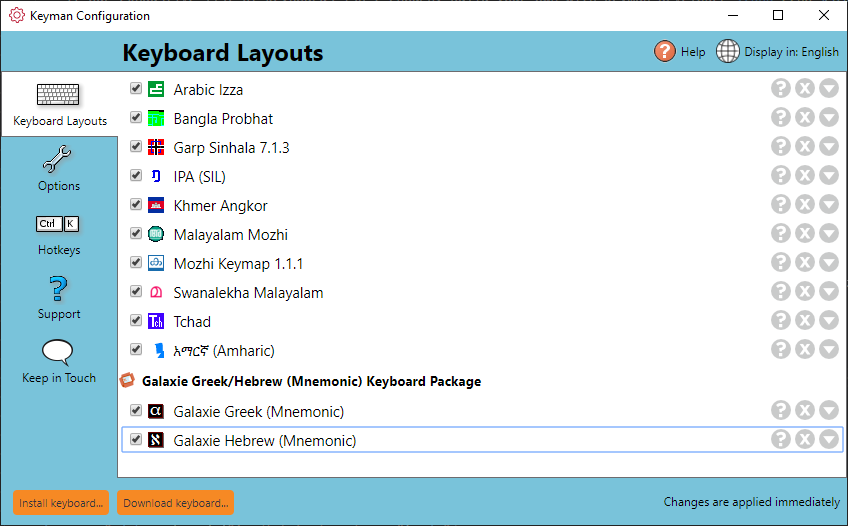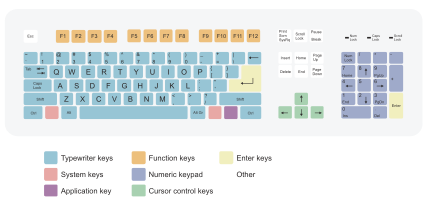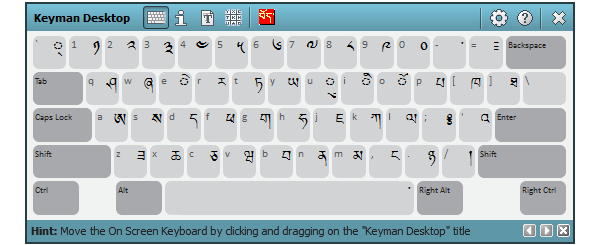Tibetan Keyboard Layout Best Tibetan Input Method
THL Toolbox > Fonts & Related Issues > Tibetan Scripts, Fonts & Related Issues > Using Tibetan in Macintoshes > Tibetan Input Tools for Macintosh
- Tibetan Keyboard Layout Best Tibetan Input Method Youtube
- English To Tibetan Keyboard
- How To Write Tibetan
- Tibetan Type
Jul 03, 2012 Now your system is ready use the TCRC Tibetan fonts Layout. You’ll notice a new icon in your system tray on the top right. You just have to click on Keyboard Typeface Layout switcher to switch from English to TCRC Tibetan Layout. Feb 03, 2018 The Tibetan Wylie transliteration keyboard is the most common keyboard layout for rendering written Standard Tibetan in Latin characters. The Tibetan pinyin keyboard layout is also popular, and is the official keyboard layout used by the People's Republic of China. Tibetan 5 row keyboard Theme App is best Tibetan language input method for easy Tibetan typing. Tibetan dual bilingual keypad gives you choice to modify your specific setting. A lot of Emoji, Emotion and smiles are included that will keep your interest in chat. Windows 7 Tibetak Keyboard Layout; Standard Windows Keyboard instructions; Third Party Tibetan Utilities. Several freeware Tibetan utlities are also available. Tibetan Input Tools for Windows; Digital Tibetan; Wylie Keyboard; Macintosh. Apple includes three versions of a Tibetan keyboard, including a QWERTY transliteration version.
Tibetan Input Tools for Macintosh
Simply having a Tibetan font does not mean that you can now use Tibetan in a computer. You also need a keyboard or input mechanism to efficiently type in Tibetan, and you also need that input mechanism to work with the various types of software you typically use. One of the problems concerning the use of Tibetan fonts in digital contexts has been the limited and non-standard nature of Tibetan script input tools and software. Usually keyboards are also platform-specific, so that they only work for Windows, Mac, or Macintosh. This page is focused on the Macintosh operating system. For other input tools, see Tibetan Input Tools for Linux, Tibetan Input Tools for Windows, and Tibetan Input Tools for Browsers or Cross-Platform. To read about the general methods of Tibetan keyboards - such as Wylie, Sambhota, etc. - please see Tibetan Input System Principles. To read about using Tibetan Unicode in the Macintosh OS in general, see Using Tibetan in Macintoshes.

Mac OS X 10.5.0 (Leopard) comes with three keyboard layouts:
- Tibetan - Wylie - (EWTS 2.02)
- Tibetan - Otani
- Tibetan - QWERTY
To use these:
Tibetan Keyboard Layout Best Tibetan Input Method Youtube
- Pull down the Apple Menu and go to System Preferences > International and click the “Input Menu” tab
- Scroll down to Tibetan and click the box next to the keyboard you want.
- Close the International dialog box
- In the Finder menu bar at the top of the screen, you will see an American flag. Click on it and point to the icon for Tibetan that you selected in the System Preferences > International window. When you type, Tibetan letters will appear.
- 2TISE
Denjong TibType
Denjong TibType is a new free Tibetan Unicode typing system based on Wylie that works on all Windows platforms including 32 & 64 bits versions.The website and a more detailed documentation are on elaboration but you can, by now, download and install the product from:
https://github.com/thubtenrigzin/DenjongTibType/ - For AZERTY and QWERTY, Wylie and Sambhota transcription.
Note: use versions > 1.0 for international keyboard support.
TISE
TISE is a free Wylie input method that runs on XP, Vista and Windows 7 (32 and 64 bit (since version 2.0)).You can download the software from:
- http://tise.mokhin.org/ (version 2.0, Nov. 2012, supports both 32 and 64 bit)
A short introduction: Typing Tibetan with TISE[1]
| This section contains Tibetan script. Without proper Tibetan rendering support configured, you may see other symbols instead of Tibetan script. |

- Start the TISE program: you will see a Mount-Kailash icon on the right side of Windows task-bar.
- TISE can be switched on and off with <shift>-<space>, or by clicking on the Mount-Kailash icon on the right side of Windows task-bar.
- Make sure to familiarize yourself with EWTS (extended Wylie) documents and help files at http://iris.lib.virginia.edu/tibet/collections/langling/ewts/ewts.php
Note: TISE seems to be incompatible with GoldenDict. If you plan to use this dictionary-program, the recommended input method would be Denjong. Alternatively, if you want to use TISE with GoldenDict, you can type the search-phrase in some other program (e.g. notepad) and then copy&paste the search term into GoldenDict.
- Basic letters
- All basic Tibetan and Tibetan Sanskrit represented by EWTS scheme are supported by Tise. Often typing the final a as in ka ཀ is not necessary, k followed by a tsheg <space> is enough.
- Longer vowels (with a subjointed small letter achung) are typed as aa ཨཱ, ii ཨཱི, uu ཨཱུ, ee ཨཱེ, oo ཨཱོ, or A ཨཱ, I ཨཱི, U ཨཱུ, E ཨཱེ, O ཨཱོ.
- Retroflex i ྀ is typed as -i, and retroflex i with achung as -I ཱྀ, e.g. k-i ཀྀ, k-I ཀཱྀ.
- au ཨཽ, ai ཨཻ are implemented.
- Tibetan punctuation
- As per EWTS. Asterisk '*' types non-breaking tsheg (0F0C) ་.
- Typing '_' (underscore) gives 0xa0 (non-breaking space).
- Regular space (0x20) is typed by x key.
- Tibetan Sanskrit letters

- As per EWTS, they are usually typed as capital letter (with Shift key pressed). Implemented are the following Tibetan Sanskrit letters: Ta ཊ, Tha ཋ, Da ཌ, Na ཎ, Sha ཥ (the latter can be type as S) R+ ཪ, +W ྺ, +Y ྻ, +R ྼ, (fixed form ra, wa, ya, e.g. ཪྟ་ རྻ་ མྺ་ ཡྼ་)
- H ཿ, M ཾ, & ྅, ? ྄.
- For the sake of simplicity, EWTS ~M and ~M` are typed as q ྃ and Q ྂ respectively.
- Complex stacks
- This is the major improvement of EWTS compared to previous approaches, and Tise fully takes advantage of this. In Tise stacks are typed using + symbol to stack glyphs vertically. If vertical stack is not what is desired, it is possible to quit vertical stacking mode by typing '.' (or just type a vowel or a tsheg if the syllable is complete).

- Examples
- gya གྱ is stacked, but g.ya གཡ isn't
- to type siddhi use: si.ddhi or sid+d+hi. In many cases, as with all standard wylie sequences like brdza, for example, typing extra + sign is not required, Tise tries to be user friendly by minimizing the number of key hits needed for typing.
- More examples: hUq ཧཱུྃ་, hUQ ཧཱུྂ, d+hIH དྷཱིཿ, oM AHhUQ ཨོཾ་ཨཱཿཧཱུྂ.
English To Tibetan Keyboard
Tavulte Soft
Tavulte Soft sells a keyboard product Keyman Light that supports EWTS (Extended Wylie) on Windows. Chose the 'Tibetan THDL' keyboard.
How To Write Tibetan
More information
- Tibetan Input Method (general, for all operating systems)
External Links
- EWTS Extended Wylie system (PDF file) http://www.thlib.org/reference/transliteration/teachingewts.pdf
- Input Methods, at Wikipedia http://en.wikipedia.org/wiki/Input_method
- Denjong TibType, a 32bit and 64bit Wylie input method for Windows [1]
- TISE homepage [/ http://tise.dzogchen.ru/]
- TISE development, at GoogleGroups http://groups.google.com/group/tise-devel/web/
- TISE readme http://groups.google.com/group/tise-devel/web/readme?hl=en
- Unicode, at Wikipedia http://en.wikipedia.org/wiki/Unicode
- Wylie transliteration, at Wikipedia http://en.wikipedia.org/wiki/Wylie_transliteration
References
Tibetan Type
- ↑From TISE readme.